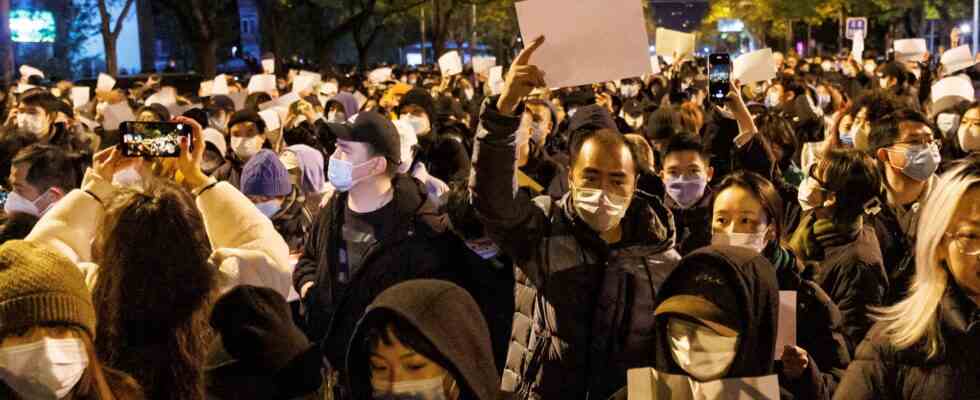Status: 05.12.2022 09:19 a.m
The demonstrations in China are apparently almost silent – but many fear severe consequences. Because the police are still looking for protesters by looking at cell phone data.
Police officers walk through the ranks on the Shanghai subway. They don’t check the tickets, they check people’s cell phones. They’re looking for suspicious photos and videos from the late November protests. And after foreign apps like Twitter, Telegram and WhatsApp. Because the people in China are said to have arranged to meet for the protests. “It’s scary,” says a passer-by:
If the police tell you to unlock your phone, there’s nothing you can do about it. You have to comply because there is no real rule of law. If you refuse, they can arrest you and you don’t know what will happen to you. And that’s what everyone fears: being arrested by the police.
As a precaution, this man transferred his own photos and videos to a foreign data platform.
Tips for hiding your data
For several days, people have been warning each other on alternative messengers like Telegram on which streets passers-by are being checked. There are tips on how to hide your data on your cell phone and make it virtually invisible to the authorities.
Cell phones are also checked for VPNs. These are forbidden virtual tunnels that allow users to get from the censored Chinese Internet to the global, free Internet. These are banned in China.
Police always seem one step ahead
The protests in Shanghai and other cities have been stifled. People also fear the consequences of the many surveillance cameras with facial recognition on the streets.
There are hints of gatherings here and there on Twitter. But only the police are there. The entrance in front of a university campus in Shanghai, for example – fully secured. The police always seem one step ahead.
Hong Kong: Pressure from National Security Law
In China’s Hong Kong Special Administrative Region, some students are worried about people who have already been arrested in mainland China. They want to help, because Hong Kong still has access to free internet and foreign apps.
But they too are under pressure. What they are doing could violate Hong Kong’s so-called National Security Law, which can criminalize anything that goes against the Communist Party leadership.
“I help spread information. I share some of the videos on Twitter and other online platforms, so I hope that way more people will know what’s happening in China,” one of the students tells dem ARD Studio Shanghai. In his opinion, the Internet blocks in China and the random checks on cell phones by the police will “definitely prevent more protests”. Because if people don’t have opportunities to share information, it becomes difficult to organize.
Remembrance of crackdown on protests 2019
Out of solidarity, some students also organized a small protest in Hong Kong last week. Only about a dozen people came. The violent crackdown on pro-democracy protests in Hong Kong in 2019 was not long ago. For many this is still too fresh. Many activists from back then have been arrested. Nevertheless, some wanted to set an example now.
“I went to the protest but I didn’t really join in because I don’t feel brave enough,” says one of the participants in the Hong Kong protest:
I’m a little ashamed because I didn’t put myself in the front line. I didn’t even hold up a sheet of white paper to vent my anger. But I just stood there. I am proud of the mainland Chinese who protested. I think they are so brave.
The Hong Kong students who are familiar with the ARD have spoken believe that the protests in China are over for the time being. The pressure from the Chinese state and party leadership is too great. In addition, corona measures have been relaxed in many places in China in the past few days. For many, these were the triggers for the protests.
Protests stifled in China: How dangerous it is to talk about it
Eva Lamby-Schmitt, ARD Shanghai, December 5, 2022 7:41 a.m

